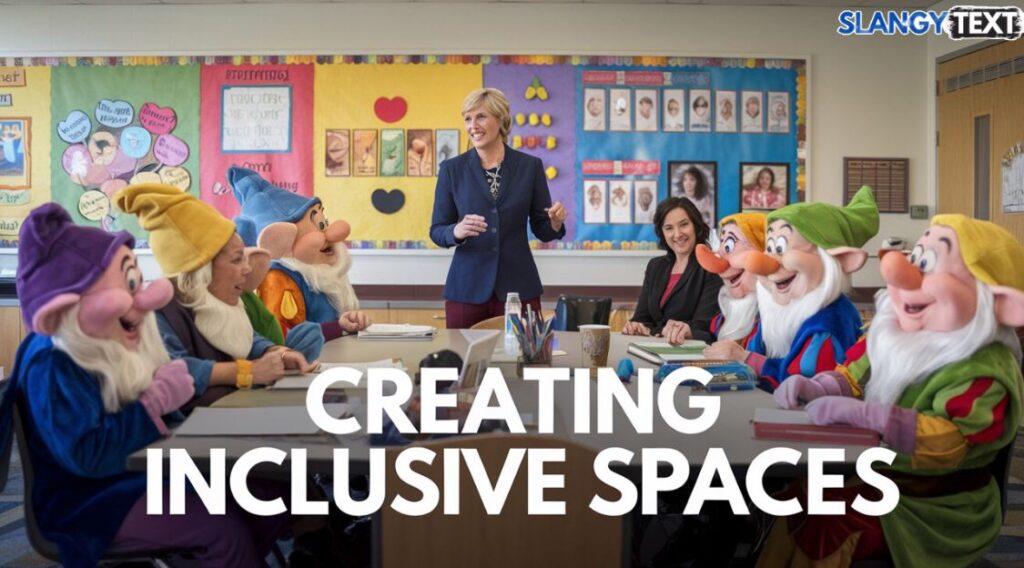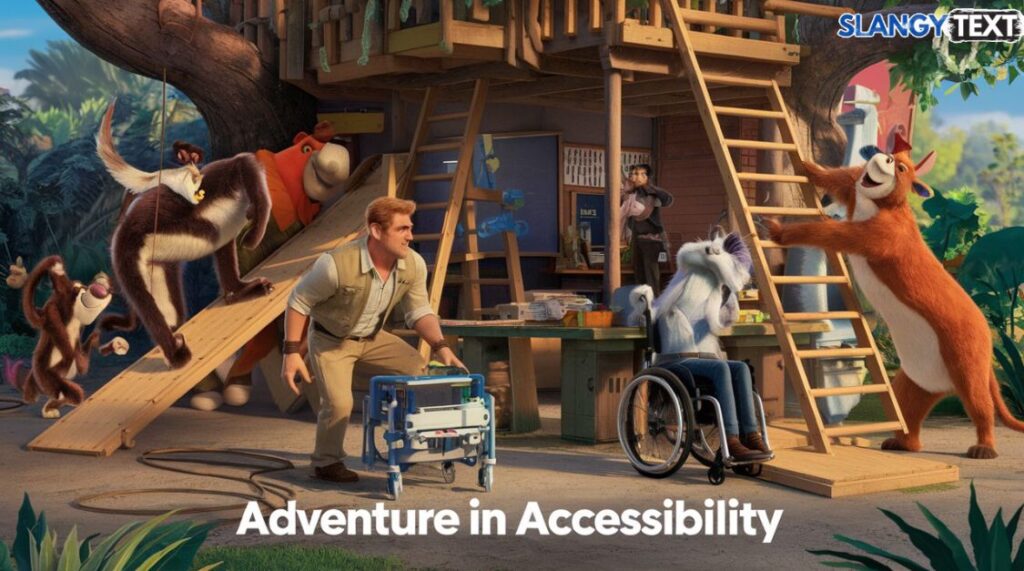Understanding Special Education Terms
The term “sped kid” has become increasingly prevalent in informal communication and social media content. This abbreviated form of “special education student” requires careful consideration regarding its usage and implications in various contexts.
Origin and Evolution
The phrase first gained significant traction around 2017, as evidenced by Google Trends data. What began as a shortened version of “special education” in academic institution settings has since evolved into a broader slang term used across various platforms.
Digital Age Impact
The term’s spread across Instagram, TikTok, and Facebook has contributed to its increasing usage. Modern internet slang often incorporates abbreviated versions of longer phrases, though this particular term requires sensitive handling.
Common Usage Contexts in Social Media
| Platform | User | Context Example |
|---|---|---|
| @james_wilson | Educational support discussion | |
| TikTok | @sarah.smith | Awareness campaign |
| Michael Brown | Parent support group | |
| @emma_davis | Resource sharing | |
| @david_miller | Educational advocacy | |
| YouTube | Amanda White | Tutorial content |
| Robert Johnson | Professional discourse | |
| Jessica Taylor | Educational materials | |
| u/thomas_anderson | Community support | |
| Discord | william_clark | Student discussions |
Professional Environment Considerations

In a professional environment, educators and administrators must maintain appropriate terminology. Here’s an email example from Principal Sarah Johnson to her staff:
“Dear Faculty,
We must ensure our communication reflects our commitment to inclusive education. Please use appropriate terminology when referring to students in our special education program…”
Also like to know this : BSN Meaning
Academic Setting Guidelines
Appropriate Terminology Examples
| Context | Appropriate Term | Speaker |
|---|---|---|
| Staff Meeting | Student with IEP | Dr. Emily Chen |
| Parent Conference | Learning support student | Mr. John Davis |
| Written Reports | Special education participant | Mrs. Lisa Wilson |
| Team Meetings | Student receiving services | Dr. Michael Brown |
| IEP Discussion | Program participant | Ms. Sarah Thompson |
| Faculty Email | Student with accommodations | Mr. James Anderson |
| Progress Reports | Learning assistance student | Dr. Rachel Martinez |
| Department Memo | Educational support recipient | Mrs. Patricia Lee |
| Conference Call | Student with modified curriculum | Mr. Robert Taylor |
| Written Documentation | Individual program student | Dr. David Williams |
Supporting Student Success

Understanding how to provide special attention to students while maintaining their dignity is crucial. The focus should always be on creating an inclusive environment where every student can thrive.
Support Strategies by Department
| Department | Strategy | Coordinator |
|---|---|---|
| Mathematics | Visual aids | Emma Thompson |
| English | Audio resources | William Davis |
| Science | Hands-on activities | Sarah Miller |
| History | Modified texts | James Wilson |
| Art | Adaptive tools | Jennifer Brown |
| Music | Sensory supports | Michael Lee |
| Physical Education | Modified equipment | Robert Anderson |
| Technology | Assistive software | Lisa Martinez |
| Language Arts | Communication aids | David Johnson |
| Life Skills | Practice materials | Patricia White |
Understanding Physical Accommodations

Some students may require specific accommodations, such as a wheelchair or other mobility aids. These physical supports should never define the student’s capabilities or potential.
Accommodation Examples
| Need | Support Type | Coordinator |
|---|---|---|
| Mobility | Accessible desk | John Wilson |
| Vision | Large print materials | Sarah Davis |
| Hearing | FM system | Michael Brown |
| Motor Skills | Grip assistance | Emma Thompson |
| Communication | Speech devices | Robert Martinez |
| Sensory | Quiet space | Jennifer Lee |
| Organization | Visual schedules | William Taylor |
| Focus | Noise-canceling headphones | Lisa Anderson |
| Writing | Adaptive tools | David Miller |
| Reading | Text-to-speech | Patricia White |
Must explore : What Does Rgr Meaning in Text (With Examples)
Addressing Temporary Conditions
Temporary sickness or short-term disabilities should be handled with the same care as permanent conditions. This reinforces the understanding that anyone might need support at different times.
Temporary Support Scenarios
| Condition | Support Plan | Coordinator |
|---|---|---|
| Broken Arm | Note-taking assistance | Emma Wilson |
| Concussion | Light sensitivity aids | Michael Davis |
| Surgery Recovery | Movement accommodation | Sarah Brown |
| Anxiety | Quiet testing space | Robert Thompson |
| Vision Changes | Seating adjustment | Jennifer Martinez |
| Hearing Issues | Front row seating | William Anderson |
| Speech Therapy | Communication cards | Lisa Johnson |
| Physical Therapy | Modified activities | David White |
| Medication Effects | Schedule adjustment | Patricia Miller |
| Emotional Support | Counseling access | James Lee |
You might also like : PYT Meaning
Preventing Misunderstanding
The term can lead to offense and misunderstanding when used inappropriately. It’s essential to recognize that every student has unique strengths and challenges.
Communication Guidelines
| Situation | Approach | Facilitator |
|---|---|---|
| Class Discussion | Inclusive language | Sarah Wilson |
| Team Projects | Strength-based grouping | Michael Thompson |
| Parent Meetings | Professional terminology | Emma Davis |
| Student Interactions | Respectful dialogue | Robert Brown |
| Staff Training | Cultural sensitivity | Jennifer Miller |
| Community Events | Appropriate messaging | William Martinez |
| Written Communications | Clear guidelines | Lisa White |
| Social Activities | Inclusive planning | David Anderson |
| Sports Programs | Adaptive strategies | Patricia Johnson |
| Academic Support | Individual focus | James Lee |
Building Inclusive Communities
Creating environments where students don’t feel labeled as “not like us” is crucial. This involves conscious effort from all community members.
Community Building Activities
| Activity | Purpose | Leader |
|---|---|---|
| Peer Mentoring | Skill sharing | Emma Brown |
| Mixed Groups | Social integration | Michael Wilson |
| Club Activities | Common interests | Sarah Davis |
| Sports Teams | Team building | Robert Thompson |
| Art Projects | Creative expression | Jennifer Martinez |
| Music Programs | Collaborative work | William Anderson |
| Science Fairs | Joint discovery | Lisa Miller |
| Reading Buddies | Mutual support | David White |
| Garden Club | Shared responsibility | Patricia Johnson |
| Tech Team | Skill development | James Lee |
Daily Usage Guidelines
In daily usage and informal communication, it’s important to remember that language shapes perceptions and experiences.
Communication Examples
| Setting | Example | Speaker |
|---|---|---|
| Classroom | Inclusive announcements | Emma Thompson |
| Playground | Supportive interaction | Michael Davis |
| Cafeteria | Welcoming gestures | Sarah Wilson |
| Library | Helpful assistance | Robert Brown |
| Gym | Encouraging words | Jennifer Miller |
| Bus | Friendly greetings | William Martinez |
| Hallway | Positive acknowledgment | Lisa Anderson |
| Office | Professional terms | David White |
| Assembly | Respectful references | Patricia Johnson |
| Events | Inclusive language | James Lee |
Moving Forward Together
Understanding and applying appropriate terminology in school settings helps create a more inclusive and supportive environment for all students. It’s essential to remember that language choices impact both individual experiences and broader community culture.
Remember that every student, regardless of their learning style or needs, contributes uniquely to our educational community. By fostering understanding and respect, we create stronger, more inclusive learning environments for everyone.
Conclusion
The discussion surrounding the term “sped kid” highlights the importance of using respectful and inclusive language in educational settings. While abbreviated terms may emerge in informal communication, maintaining professional and supportive terminology is crucial for creating an environment where all students can thrive. Educational communities must focus on recognizing each student’s unique abilities and potential rather than defining them by their learning needs or accommodations.
By fostering understanding, implementing appropriate support strategies, and promoting inclusive language, we can build stronger educational environments that celebrate diversity and ensure every student feels valued and respected. The path forward lies in conscious effort from all community members to create spaces where labels don’t define success, and every student has the opportunity to reach their full potential.
Must visit : What Does Leai Faafetai Mean (With Examples)?

Kayla Rogers is a writer at Slangy Text who loves exploring modern acronyms & slangs and how they shapes our conversations. She enjoys sharing fun and interesting articles that connect with readers. When she’s not writing, Kayla likes to keep up with the latest trends or relax with a good book.







